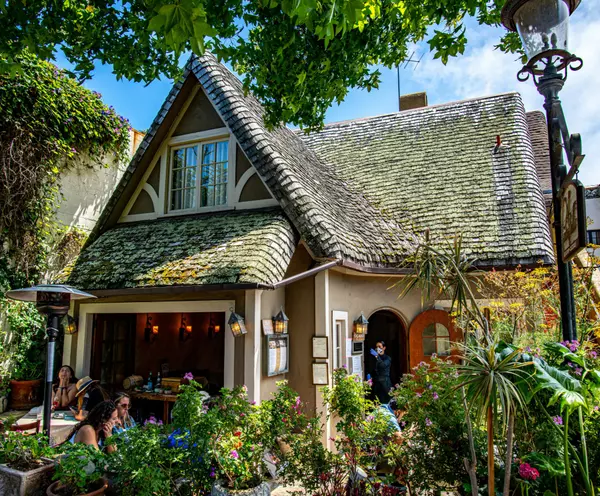Is the Market Finally Normalizing? A Monterey Peninsula Perspective Heading Into 2026

Is the Market Finally Normalizing? A Monterey Peninsula Perspective Heading Into 2026
Last year, it felt like real estate headlines couldn’t decide what story they wanted to tell. One day it was “housing crash incoming.” The next, “record-low inventory keeps prices high.” Between talk of lawsuits, interest rate hikes, and buyer fatigue, it’s no wonder that many people pressed pause.
Now that we’ve had some time and perspective, we can start to see the broader picture. The dust has settled a little. The question that buyers and sellers are both asking now is: Is the market finally returning to normal?
The answer, in short, is: sort of. But what “normal” means depends entirely on where you live, and few places behave quite like the Monterey Peninsula.
What “Normal” Means
Across much of the country, we’re seeing small but steady signs of balance. Inventory is creeping up in many metro areas. Price growth has cooled. Days on market are lengthening, giving buyers more breathing room.
But “normal” doesn’t mean prices will fall dramatically or that bidding wars will disappear altogether. It just means the pace is becoming more sustainable. After years of volatility, that’s a relief.
The bigger story, though, is how local these shifts are. The national market might be stabilizing, but that doesn’t mean Monterey, Carmel, or Pacific Grove will follow the same pattern. The Peninsula is its own ecosystem driven by lifestyle demand, limited land supply, and a steady flow of out-of-area buyers who see this stretch of coast as their forever place.
Here, “normalization” looks different. It doesn’t mean lower prices. It means healthier negotiations. It means realistic pricing from sellers and more strategic, less reactive offers from buyers. In other words, the kind of market where thoughtful, well-advised moves pay off.
What’s Driving the National Shift
To understand what’s happening locally, it helps to look at the national backdrop.
Interest rates, after climbing rapidly through 2023, have begun to stabilize. The initial shock of seeing rates above 7 percent has faded, and buyers are adjusting. Lenders have rolled out creative financing solutions: rate buydowns, temporary adjustments, and flexible programs for well-qualified borrowers.
Meanwhile, pent-up demand remains high. Millions of potential buyers sat on the sidelines waiting for rates to drop, and as the economy finds footing, many are deciding that waiting costs more than acting.
Builders, on the other hand, are still catching up. Years of underbuilding left the country short on housing, especially in desirable regions like coastal California. That imbalance between supply and demand continues to define the market.
So, while national analysts debate whether the market is “cooling” or “stabilizing,” what’s really happening is an adjustment in psychology. Buyers are learning to operate in a higher-rate world. Sellers are learning to price homes that reflect reality rather than nostalgia for 2021. And agents are returning to the fundamentals: clear communication, careful negotiation, and deep local understanding.
How Monterey Defies the National Story
On the Monterey Peninsula, the story is quieter — and steadier.
While other markets saw frenzied highs and steep corrections, the Peninsula has remained surprisingly consistent. That’s partly due to geography. The area is physically small, bordered by ocean, hills, and protected land. There’s simply not much room to build. Supply remains tight.
Add to that a constant stream of buyers drawn by lifestyle rather than speculation — people relocating from the Bay Area, retirees looking for climate stability, and second-home owners who see Monterey, Carmel, and Pacific Grove as enduring investments. These aren’t markets that live and die by interest rate swings. They’re driven by quality of life and scarcity.
Even in slower periods, homes with character, light, or proximity to the coast continue to move. Buyers may take longer to decide, but the appetite doesn’t vanish.
In Pacific Grove, for instance, historic homes and walkable neighborhoods continue to command premium attention. In Carmel, the appeal of architecture and coastal seclusion insulates values. And in Pebble Beach, limited turnover and global name recognition keep demand alive even when national sentiment dips.
Why It’s a Good Time to Act (For Buyers)
When rates first jumped, many buyers froze. But the irony is that some of the best opportunities appear in times like these.
Inventory is modest but not nonexistent. Sellers who list in late fall or winter tend to be serious about moving. The pace is calmer. You can take your time. Inspect carefully. Think. Negotiate.
Another advantage of buying now is psychological: less noise, less competition. When spring arrives, more buyers will come off the sidelines. That renewed demand will apply pressure again, especially in desirable submarkets like Pacific Grove or Carmel Valley.
You can always refinance later if rates fall, but you can’t rewind the market once competition heats back up. Buyers who act now often get better terms. Not necessarily because prices are lower, but because they can negotiate more creatively.
Think of it as the difference between shopping in a quiet boutique versus a crowded store. The inventory hasn’t changed. The experience has.
Why It’s a Good Time to Act (For Sellers)
Sellers, too, can benefit from the current climate if they approach it strategically.
While some assume a slower national market means it’s harder to sell, that’s not true here. The Monterey Peninsula remains supply-constrained, with demand far exceeding the number of available homes.
What’s changing is the way homes sell. Buyers today are careful. They want transparency, context, and trust. Well-prepared listings — professionally presented, accurately priced, and marketed with depth — still command strong results.
Pricing right matters more than ever. Overpricing in this environment sends the wrong signal and leads to unnecessary lag. But when a home is priced in tune with its condition and local demand, it stands out immediately.
At The Ruiz Group, we’ve seen that strategic pricing, high-quality storytelling, and market timing still drive exceptional outcomes, even when the broader market looks uncertain.
Understanding the Monterey Microclimates of Value
Every pocket of the Peninsula behaves differently. Buyers who understand those nuances make smarter choices.
-
Pacific Grove: Consistent year-round demand from both locals and second-home buyers. Tight inventory and character-driven architecture keep prices resilient.
-
Monterey: Slightly broader price range and more diversity in housing stock. Great opportunities for those willing to look beyond the postcard views.
-
Carmel-by-the-Sea: Ultra-limited supply and international appeal. Still one of the most stable luxury markets in California.
-
Carmel Valley: Microclimate appeal — sunshine, vineyards, acreage — draws those seeking warmth and space.
-
Pebble Beach: Iconic, low-turnover, and somewhat insulated from national trends. A lifestyle market that moves at its own rhythm.
-
Seaside and Marina: Historically undervalued, now experiencing sustained interest from first-time and move-up buyers seeking proximity and potential.
Understanding how these micro-markets interact is key to timing your move wisely.
The Emotional Reset of a “Normal” Market
The return to balance has also shifted tone. For the first time in years, both buyers and sellers can exhale. There’s less panic, less speculation, and more clarity.
That’s a good thing. Real estate at its best is not about racing or chasing. It’s about alignment—finding a property that fits your life, your rhythm, your future.
For buyers, this means being able to walk through a home and actually feel it, without worrying that twenty other people are writing offers the same afternoon. For sellers, it means conversations that focus on substance rather than adrenaline.
This is what healthy markets look like. And on the Monterey Peninsula, that health is showing up as steadiness, not stagnation.
Looking Ahead
If national patterns continue, 2026 will likely be a year of cautious optimism. Rates may fluctuate, but stability has a way of drawing people back into motion.
On the Monterey Peninsula, we expect continued strength — measured, thoughtful growth, and sustained demand from those drawn to the coast’s rare combination of natural beauty, architectural charm, and lifestyle ease.
Buyers and sellers alike should view this season not as a pause, but as a reset. The market isn’t volatile anymore. It’s intentional.
And that’s when smart moves get made.
Final Thought
Whether you’re buying, selling, or just watching from the sidelines, remember this: the best time to act is when everyone else hesitates.
Categories
Recent Posts










GET MORE INFORMATION

